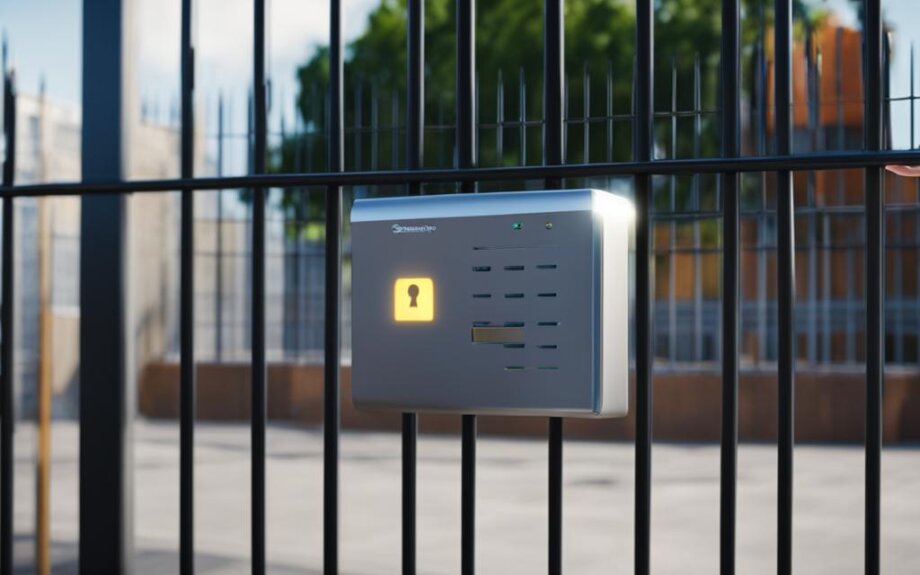Welcome to our comprehensive guide on how to configure and use a secure proxy server. In this section, we will provide you with a step-by-step guide and tips on how to ensure online safety while browsing the web. By using a secure proxy server, you can protect your online identity and sensitive data, access blocked websites, and enjoy secure browsing on public Wi-Fi networks.
It is essential to configure and use a secure proxy server to enhance your online security. Proxy servers act as intermediaries between your device and the internet, allowing you to browse the web anonymously. With a secure proxy server, you can hide your IP address, encrypt your online activity, and prevent hackers and cybercriminals from intercepting your data.
In the following sections, we will explain what a proxy server is, how to choose a secure one, and how to configure the proxy server settings. We will also provide you with tips on using a proxy server on different devices and popular web browsers, as well as troubleshooting tips and best practices for secure proxy server usage.
So let’s get started and learn how to configure and use a secure proxy server to ensure your online safety and privacy.
Understanding Proxy Servers
If you want to ensure your online security, a proxy server configuration guide can help. But first, it’s important to understand what a proxy server is and how it works.
A proxy server acts as an intermediary between your device and the internet. When you request information from the internet, it goes through the proxy server first. The server then sends the request to the internet, and the requested information is sent back to the server. The server then sends it back to your device.
Through this process, a proxy server can offer several benefits. For one, it can improve your online privacy by masking your IP address. Additionally, it can help you bypass internet restrictions, such as those imposed by your workplace or school. Finally, proxy servers can enhance your online security by filtering out potentially harmful websites or malware.
Configuring a Secure Proxy Server
While proxy servers offer benefits, it’s important to configure them securely. A configuring a secure proxy server requires attention to detail and a good understanding of the different security measures available.
One key consideration is the type of proxy server you want to use. There are three types: transparent, anonymous, and high anonymity. Transparent proxies are the least secure, as they do not hide your IP address. Anonymous proxies hide your IP address but can still allow websites to detect that you’re using a proxy. High anonymity proxies offer the most protection, as they completely mask your IP address.
Another important security measure is encryption. Look for a proxy server that offers encryption, such as SSL or TLS. This will help ensure that your online activity is fully protected.
In addition to these security measures, be sure to select a proxy server with a solid reputation. Do some research to find out if the server has any known vulnerabilities or security issues.
Tip: Be wary of free proxy servers, as they may not offer adequate security measures or may even be set up with malicious intent.
Choosing a Secure Proxy Server
Configuring a secure proxy server is essential for online safety. However, choosing the right one can be a daunting task. In this section, we will guide you on choosing a secure proxy server. Consider the following:
- The level of security it provides. Look for proxy servers with advanced security features like encryption and firewalls.
- Speed and latency. Ensure the proxy server you choose doesn’t slow down your internet connection.
- Reliability and uptime. Check the proxy server’s reliability and uptime to avoid downtime or connection issues.
- Compatibility. Ensure the proxy server you choose is compatible with your devices and browser.
When considering the security measures of a proxy server, the following are important:
| Security Measures | Description |
|---|---|
| Encryption | Encrypts your data traffic to protect it from being intercepted or hacked. |
| Firewall | Blocks unauthorized access to your data and devices. |
| Virtual Private Network (VPN) | Creates a secure and private network between your device and the internet. |
Ensure the proxy server you choose has at least one of these security measures.
Once you have chosen a secure proxy server, it’s time to configure it. In the next section, we will guide you on how to configure proxy server settings.
Configuring Proxy Server Settings
Configuring the proxy server settings is an essential step in setting up a secure proxy server. It enables you to establish a secure connection and browse the web securely. Here is a step-by-step guide to help you set up your secure proxy server:
Step 1: Open your web browser’s settings
Open your preferred web browser and click on the settings icon on the top right corner of the screen. From the drop-down menu, select the “Settings” option.
Step 2: Go to the proxy server settings
Once you are in the settings menu, scroll down to the bottom of the page and click on the “Advanced” button. Next, select the “Proxy” option from the list of options under the “System” section.
Step 3: Configure the proxy server settings
Configure the settings to match your specific requirements. You will need to enter the IP address and port number of the proxy server you wish to use. You can find this information from your proxy server provider or network administrator.
Note: Before configuring the proxy server settings, ensure that you have all the necessary information required to establish a secure connection.
Additionally, you may need to configure other settings, such as authentication and credentials, depending on your specific proxy server requirements. Ensure that you have all the necessary details to configure these settings before proceeding.
Step 4: Save the changes
Once you have configured all the necessary settings, click on the “Save” button to apply the changes. Your web browser will now use the secure proxy server for all internet connections.
Step 5: Test your connection
After configuring the proxy server settings, it is essential to test your connection to ensure that it is secure. You can use online tools or software to test the security of your proxy server connection.
A secure proxy server setup can provide a safe and secure browsing experience. Follow these steps and ensure that the proxy server configuration guide provided by your provider is followed to establish a secure connection.

Using a Proxy Server on Different Devices
Now that you’ve configured your secure proxy server, it’s time to start using it on your various devices. Here are some tips to optimize your usage:
- Computers: On your computer, head to your browser’s settings and enter your proxy server details. You’ll then be able to browse with a secure connection.
- Smartphones: To use a proxy server on your smartphone, go to your Wi-Fi settings and set up a manual connection. Enter your proxy server details, and you’re good to go!
- Tablets: Tablet usage is similar to smartphones. Navigate to your Wi-Fi settings, set up a manual connection, and enter your proxy server details.
It’s important to note that some apps may not work with a proxy server, so keep that in mind when using it on your devices.
Using a secure proxy server can significantly enhance your online security and privacy. However, there are some additional tips to keep in mind:
- Always make sure that the websites you’re browsing are using HTTPS encryption.
- Use a strong and unique password for your proxy server to prevent unauthorized access.
- Regularly check the security of your proxy server using the testing tools mentioned earlier.
With these tips in mind, you can confidently use your secure proxy server and enjoy a safer online experience.
Setting up a Proxy Server in Popular Web Browsers
If you want to use a secure proxy server, you first need to configure it in your web browser. The process may vary slightly depending on the browser you are using, but the general steps are similar. Here’s a proxy server setup tutorial for popular web browsers like Chrome, Firefox, and Safari:
Chrome
To set up a proxy server in Chrome:
- Click the three dots in the upper-right corner of the window.
- Select “Settings” from the drop-down menu.
- Scroll to the bottom of the page and click “Advanced.”
- Under “System,” click “Open proxy settings.”
- Click “LAN settings.”
- Check the box that says “Use a proxy server for your LAN.”
- Enter the IP address and port number of the proxy server you want to use.
- Click “OK” to save your changes.
Firefox
To configure a proxy server in Firefox:
- Click the three horizontal lines in the upper-right corner of the window.
- Select “Options” from the drop-down menu.
- Click “General” on the left-hand side of the page.
- Scroll down to the “Network Settings” section and click “Settings.”
- Select “Manual proxy configuration.”
- Enter the IP address and port number of the proxy server you want to use.
- Click “OK” to save your changes.
Safari
To configure a proxy server in Safari:
- Open Safari and click “Safari” in the menu bar at the top of the screen.
- Select “Preferences” from the drop-down menu.
- Click the “Advanced” tab.
- Click “Change Settings” next to “Proxies.”
- Select the type of proxy you want to use from the list on the left.
- Enter the IP address and port number of the proxy server.
- Click “OK” to save your changes.
Once you’ve configured your proxy server in your browser, you’re ready to start browsing the web more securely. Remember to choose a secure proxy server and regularly verify its connection and security for optimal online safety.
Using Proxy Server Extensions
Proxy server extensions or add-ons for web browsers can provide additional functionality and security for your proxy server usage. Here are some tips for using them:
- Choose reputable extensions: It’s important to select extensions from trusted sources, such as the Chrome Web Store or Firefox Add-ons Marketplace. Avoid downloading extensions from unknown or untrusted websites.
- Research the extension: Before installing an extension, do some research on its functionality and reviews from other users. Some extensions may collect data or compromise your privacy, so it’s important to be informed.
- Minimize the number of extensions: Having too many extensions can slow down your browser and increase security risks. Only install extensions that you need for your proxy server usage, and regularly remove any that you no longer use.
Here are some popular proxy server extensions:
| Extension | Description |
|---|---|
| Proxy SwitchyOmega | A powerful extension for Chrome and Firefox that allows you to easily switch between proxy servers and configure advanced settings. |
| FoxyProxy | An extension for Firefox and Chrome that provides advanced proxy server management, including multiple proxy configurations and automatic switching. |
| Hoxx VPN Proxy | An extension for Firefox and Chrome that provides a simple interface for connecting to VPNs and proxy servers, with multiple server locations available. |
Remember to use proxy server extensions responsibly and keep them up-to-date to minimize security risks.
Proxy Server Authentication and Credentials
Once you have selected and configured your secure proxy server, it is important to set up authentication and credentials to ensure the highest level of security. Authentication helps to prevent unauthorized access to the proxy server, while credentials provide additional layers of security to protect your data and online activities.
Password Authentication
The most common method of authentication is password authentication. This involves setting up a username and password for accessing the secure proxy server. It is important to use a strong and unique password, preferably consisting of a combination of letters, numbers, and symbols. You should also avoid using the same password for multiple accounts.
To configure password authentication, go to the proxy server settings and select the option to set up a username and password. Enter a strong and unique password, and save your settings. You will now need to enter your username and password every time you connect to the proxy server.
IP Whitelisting
Another method of authentication is IP whitelisting. This involves granting access to the proxy server only to specific IP addresses. This method is useful if you need to restrict access to the proxy server to a specific network or device.
To configure IP whitelisting, go to the proxy server settings and select the option to set up IP restrictions. Enter the IP addresses you want to whitelist, and save your settings. Only the devices with the whitelisted IP addresses will be able to connect to the proxy server.
Credentials
In addition to authentication, you can also set up credentials to provide extra layers of security for your online activities. Credentials involve setting up additional login information for specific websites or applications that you use through the proxy server.
For example, if you use a secure proxy server to access your online banking account, you can set up credentials to provide an extra layer of security. This may involve setting up a separate username and password for your banking website or using two-factor authentication.
Secure Proxy Server Tutorial
Configuring authentication and credentials for your secure proxy server is a critical step in ensuring the highest levels of online security. Password authentication and IP whitelisting are the most common methods of authentication, while credentials provide additional layers of security for your online activities. For more information on configuring your secure proxy server, refer to our secure proxy server tutorial.
Testing Proxy Server Connection and Security
Testing your proxy server connection and security is critical for ensuring that it is functioning correctly and providing adequate protection. Below are some methods for checking the security measures of your proxy server:
- Proxy Server Checker: Use an online proxy server checker to test the connection and anonymity level of your proxy server. This tool detects if your IP address is leaking and if the proxy server is properly configured for security measures.
- WebRTC Leak Test: The Web Real-Time Communication (WebRTC) feature can sometimes bypass proxy servers, exposing your real IP address and location even when the proxy is enabled. Perform a WebRTC leak test to verify that your proxy server is blocking WebRTC.
- SSL/TLS Test: Use an SSL/TLS test tool to ensure that the proxy server is using the latest encryption protocols to secure your data. This test verifies that the proxy is not using outdated encryption methods that can be vulnerable to attacks.
- Firewall Test: A firewall test can verify that your proxy server is properly configured to block unwanted traffic and ensure that only authorized connections are allowed. This can help prevent attackers from penetrating your network through the proxy server.
By performing these tests regularly, you can ensure that your proxy server is secure and functioning correctly. In addition, it is advisable to periodically review your security measures to ensure that they are up to date and that new threats are being addressed.
Proxy Server Security Measures:
| Security Measure | Description |
|---|---|
| Encryption | Using SSL/TLS encryption can secure your connection and protect your data from interception. |
| Firewall | A firewall can block unwanted traffic and prevent unauthorized access to your network. |
| Anonymous IP | Using a proxy server with an anonymous IP address can help protect your location and identity online. |
| WebRTC Blocker | A WebRTC blocker can prevent WebRTC leaks and protect your IP address even if accidentally used on a website. |
| Anti-Malware | Using anti-malware software can protect against malware and phishing attacks that can compromise your security. |
Implementing these security measures can enhance the protection provided by your proxy server and ensure that your online activity remains safe and secure.
Troubleshooting Proxy Server Issues
If you are experiencing issues with your secure proxy server setup, don’t worry. Here are some common problems and helpful tips to troubleshoot them:
Problem: Connection Issues
If you are having trouble connecting to the proxy server, here are some things you can try:
- Ensure that you have entered the correct IP address and port number in your proxy server settings
- Make sure that your device is connected to the internet
- Check if there is an outage in the proxy server network by contacting your provider
Problem: Slow Browsing Speed
If you notice that your browsing speed has significantly decreased after setting up a secure proxy server, try the following:
- Choose a proxy server that is closer to your location
- Check if the proxy server is overloaded or experiencing high traffic
- Optimize your browser for better performance
Problem: Compatibility Issues
If you are having issues accessing certain websites or using certain applications with your secure proxy server, here are some things you can do:
- Check if the website or application is blocked by the proxy server provider
- Try using a different proxy server configuration or provider
- Disable the proxy server for specific websites or applications
Problem: Security Breaches
If you suspect that your secure proxy server has been compromised, take the following actions:
- Disconnect from the proxy server immediately
- Change your login credentials and passwords
- Contact your proxy server provider for assistance
Remember, setting up and using a secure proxy server requires careful consideration and attention to detail. Don’t hesitate to reach out to your provider if you encounter any issues or concerns.
Best Practices for Secure Proxy Server Usage
Now that you have configured and set up your secure proxy server, it’s important to use it correctly to maximize online safety. Here are some best practices to follow:
- Choose the right server: Select a server that meets your needs and offers strong security features.
- Use HTTPS: Always use HTTPS websites to ensure end-to-end encryption and prevent data breaches.
- Keep your credentials safe: Don’t share your proxy server credentials with anyone and change them frequently to avoid unauthorized access.
- Avoid accessing sensitive information: Avoid accessing and sharing sensitive information such as bank details, passwords, and personal identification numbers (PINs) through a proxy server.
- Use a reliable extension: Use a reliable extension or add-on for your browser and keep it updated to ensure optimal performance and security.
- Regularly check for updates: Check for updates on your proxy server and browser regularly. Update them to the latest version to patch security vulnerabilities.
- Be careful: Be mindful of the websites you access and always double-check URLs for any suspicious characters or spelling errors that could indicate phishing attempts.
- Monitor your online activity: Monitor your online activity regularly to spot any unusual behavior or signs of unauthorized access.
By following these best practices, you can make the most out of your secure proxy server and ensure your online safety and security.
Conclusion
Congratulations! You now know how to configure and use a secure proxy server to enhance your online safety. By following our step-by-step guide and using our tips, you can configure a secure proxy server that meets your needs and preferences.
Remember, choosing a secure proxy server is crucial for protecting your online identity and privacy. Always consider the security measures and configurations before selecting a proxy server.
Setting up a secure proxy server in popular web browsers is easy. All you need is to follow our guide on how to configure the proxy server settings and set up authentication and credentials.
Testing the proxy server connection and security is also important. Use the tools and techniques we provided to verify the functionality and security of your proxy server.
Finally, always follow the best practices for using a secure proxy server. This will help you maximize your online security and privacy. You can now browse the web with confidence and peace of mind.






